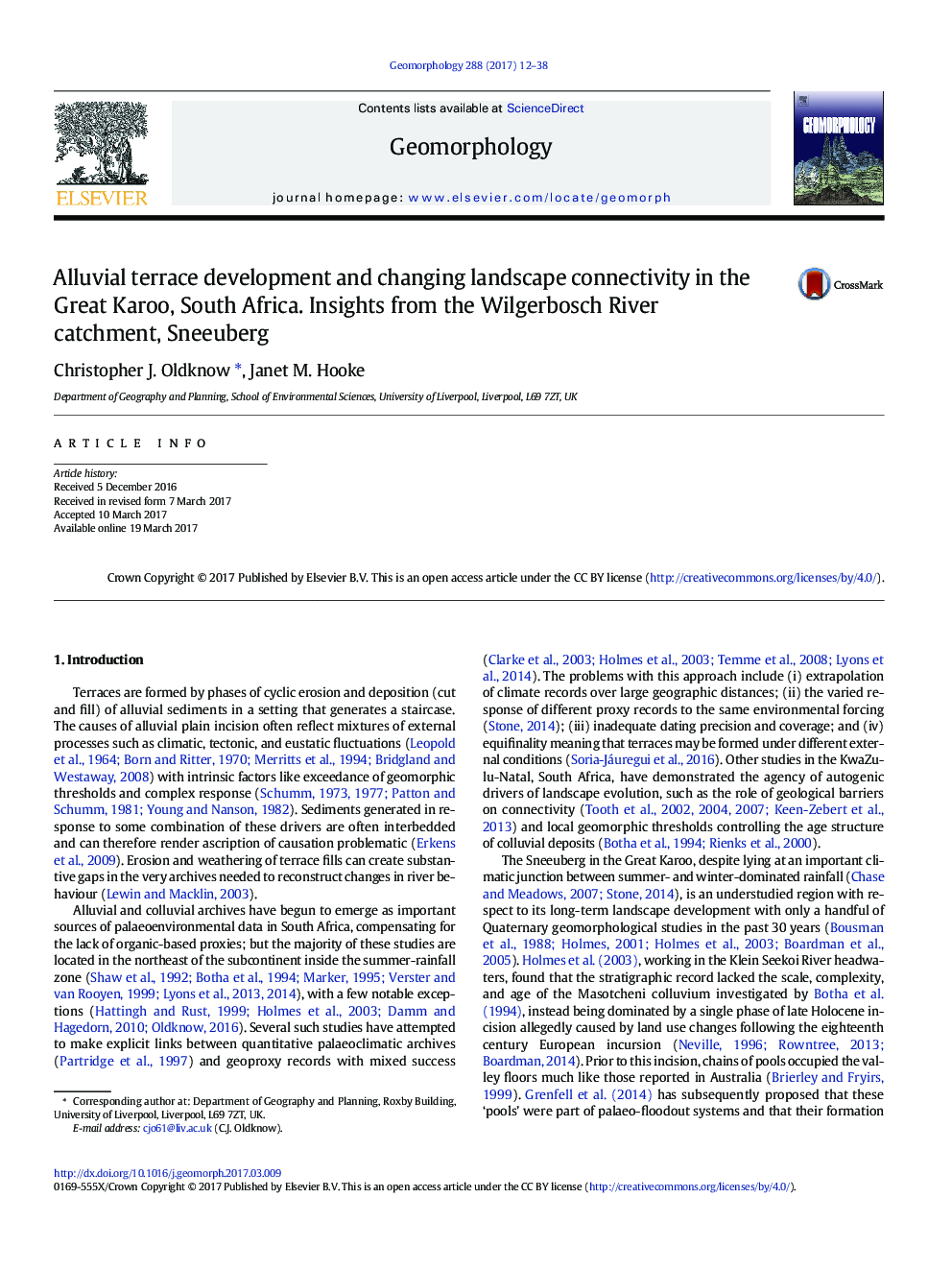| Article ID | Journal | Published Year | Pages | File Type |
|---|---|---|---|---|
| 5780998 | Geomorphology | 2017 | 27 Pages |
Abstract
Dendritic channel networks in the Wilgerbosch River catchment draining the south side of the Sneeuberg, South Africa, are deeply incised exposing terrace fills of varying thickness and extent. Channel long sections exhibit 'stepped' profiles where resistant rock strata cross valley floors but are now partially or completely breached. Using a combination of aerial image analysis, geomorphological mapping, sedimentological investigations (field logging, grain size, and magnetic susceptibility analyses), and geochronology (OSL, 14C), this study demonstrates the patterns and controls on erosion and sedimentation and, to a lesser extent, the age structure of fills in two low-order tributaries (Africanders Kloof and Wilgerbosch Kloof) and several reaches of the higher-order Wilgerbosch River. A conceptual model of terrace development in relation to changing conditions of connectivity is presented. Valley headwaters are dominated by discontinuous palaeochannel and floodout sediments; whilst in second- to fourth-order tributaries, four sedimentologically and stratigraphically distinct terrace fills that exceed the scale and complexity of deposits on the northward side of the Sneeuberg were identified and analysed. The early part of this regional terrace succession highlights the importance of interactions between periglacial and fluvial activity on cut, fill, and pedogenesis around the time of the deglacial period. Terrace development is shown to have been a complex response to reconnection of the channel network with upland colluvial stores resulting in the valleys becoming choked with sediment. This caused a rise in groundwater and formation of extensive calcretised rootmats on valley floors and slopes acting to 'blanket' terraces 1 and 2. The thickness and longevity of this blanket is shown to restrict depth of incision in subsequent phases (T3, T4). The deposits in these headwater valleys have, until now, been overlooked as a source of palaeoenvironmental information. This study is the first to demonstrate the role and importance of changing connectivity in 'cut and fill' phases that predate the late eighteenth century European incursion in the Sneeuberg.
Related Topics
Physical Sciences and Engineering
Earth and Planetary Sciences
Earth-Surface Processes
Authors
C.J. Oldknow, J.M. Hooke,
